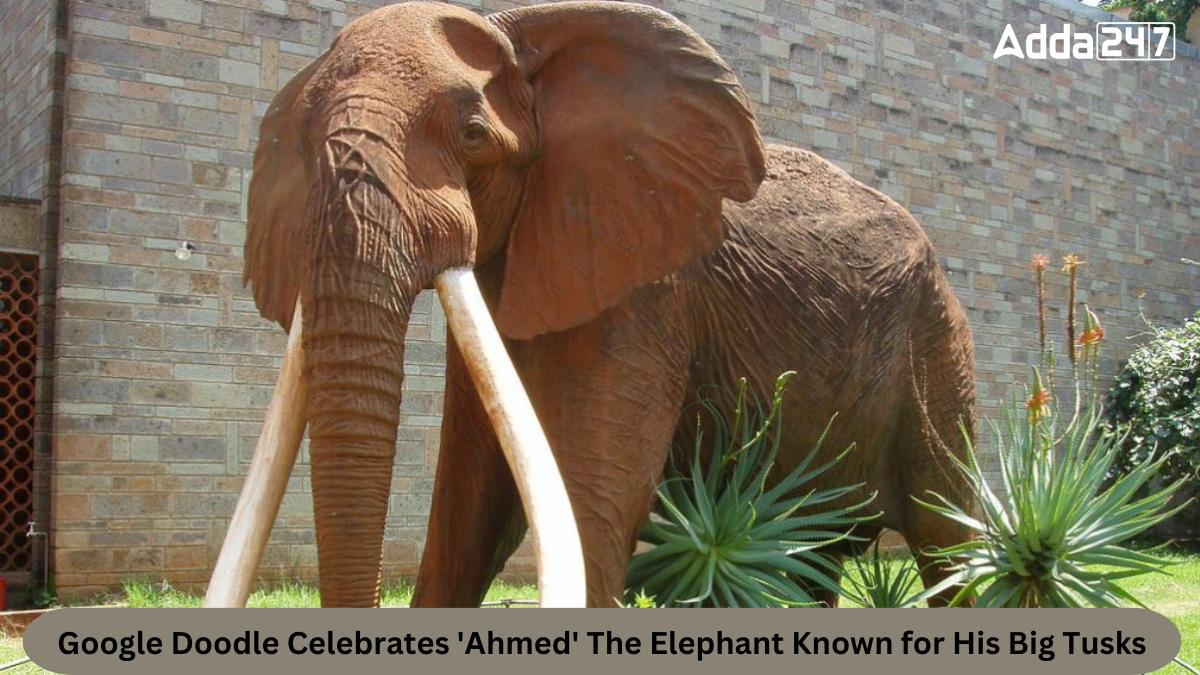Google Doodle, the creative and artistic platform used by Google to commemorate significant events and individuals, has dedicated a doodle today to Ahmed the Elephant. Ahmed’s story is a remarkable tale of a majestic elephant born in 1919 in the forests of Mount Marsabit, Kenya. The doodle, featuring illustrations of elephants and tourists, serves as a tribute to Ahmed’s legacy and the efforts to protect him from poachers.
Who is Ahmed the Elephant?
Ahmed’s journey began in the pristine landscapes of Mount Marsabit, Kenya, where he was born in 1919. His majestic tusks, said to scare the ground, earned him the title “The King of Marasabit.” Though rarely seen, Ahmed’s legacy grew and hikers in the North Kenya mountains began spreading tales of this extraordinary elephant.
Ahmed’s Enormous Tusks and Unique Behavior
Renowned for his colossal tusks, each weighing a staggering 150 pounds, Ahmed’s tusks were the heaviest and largest in Africa. His distinctive behavior, including ability to climb hills only by walking backward due to its extended tusks, further added to his mystique.
Media Attention and Recognition
Ahmed’s extraordinary tusks attracted attention from various media, outlets, resulting in television projects, including an ABC series and a documentary in 1970. The legend of “The King of Marsabit” began circulating across Kenya, further elevating Ahmed’s status.
Campaign for Protection
As pop culture rose, school children initiated a campaign for Ahmed’s protection from poachers. Concerned about the elephant’s safety, the children wrote letters to Kenya’s first President, Mzee Jomo kenyatta. Responding to the public outcry, President Kenyatta issued a Presidential Decree placing Ahmed under protection.
Presidential Protection
To safeguard Ahmed from poachers, two security guard were appointed to watch over him throughout the day. This unprecedented step highlighted the significance of preserving this iconic elephant, not only for Kenya but for the world.
Ahmed’s Legacy and Preservation
Ahmed lived to the age of 55 and died of natural causes. Following his passing, President Kenyatta called for the preservative of Ahmed’s body for future generations. Taxidermists were tasked with preserving Ahmed’s body, which can still be found today at the Nairobi National Museum. Kenya celebrated Ahmed’s legacy, marking a crucial moment in the country’s conservation history.
Global Recognition
The Google Doodle dedicated to Ahmed the Elephant is not limited to Kenya but spans across various regions, including Iceland, Uruguay, Chile, Pakistan, France, Ireland, the United Kingdom, Switzerland, Austria and Germany. This global recognition underscores Ahmed’s impact on wildlife conservation and the collective efforts to protect endangered species.
Important Questions Related to Exams
Q1. Why did Google create a doodle for Ahmed the Elephant?
Sol. To commemorate Ahmed’s remarkable life and the efforts to protect him from poachers.
Q2. What set Ahmed apart from other elephants?
Sol. Ahmed had massive tusks that reportedly scraped the ground, leading to global recognition.
Q3. How did Ahmed gain media attention?
Sol. His extraordinary tusks attracted attention, resulting in television projects like an ABC series and a 1970 documentary.



 Important Days in July 2024, Check Natio...
Important Days in July 2024, Check Natio...
 UNESCO Expands World Network of Biospher...
UNESCO Expands World Network of Biospher...
 Jagannath Puri Rath Puri 2024: Date, His...
Jagannath Puri Rath Puri 2024: Date, His...
